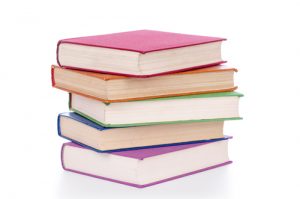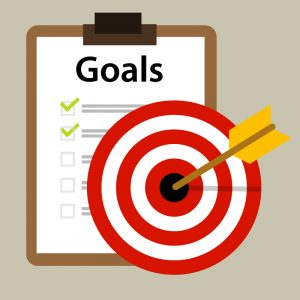Setting Individual Goals for Readers
 At my school, we had a reading goal of 20 books a year for each student. This goal was further broken down into page goals for grade levels — 400 pages each month for 6th graders, 500 for 7th graders, and 600 for 8th graders.
At my school, we had a reading goal of 20 books a year for each student. This goal was further broken down into page goals for grade levels — 400 pages each month for 6th graders, 500 for 7th graders, and 600 for 8th graders.
These goals were set for vertical consistency, and for my first few years, I heeded the expertise of my colleagues, and I did as they did. I kept my own reading log. I meticulously tallied student totals for books and pages. I helped kids choose books.
I realized, though, that page and book goals were not complementary. Many of my students’ favorite 8th-grade texts were 200 pages or less, so they were meeting the book total, but not the page total. Then there were texts that were far more that 200 pages, causing students to not meet the book goal.
There are many ways to finagle this information, but I was left questioning what this school-wide goal actually meant for my readers. Also, I saw my struggling learners feel defeat each month when they didn’t reach the goal, or their reading-level-appropriate books were much shorter than those of their peers. Additionally, I had to grade these reading logs, but the grading wasn’t aligned to any standard, except the arbitrary number that my colleagues set.
I couldn’t keep allowing students to fail in this task, so I changed my approach to reading logs.
Personalized Goals
I used the following strategies with students:
1. Students, working with me, set a personalized monthly reading goal.
2. I provided a variety of logs to choose from — monthly, daily, even yearly.
3. Conferences became about setting good goals and making good book choices.
The first month, we started with just a two-week goal. Students were eager to repeat their previous goals, but as I conferenced with them, many admitted that they didn’t often meet those goals. So I asked, What goal can we reach to be successful? They paused and breathed, and set a goal they thought they could achieve based on prior knowledge and experience.
As a result, more students than ever turned in their logs and reached their goals.
 As we continued, for many it was easy to double the two-week goal. For others who struggled to meet their goals, the common theme was that they didn’t make time to read daily. So we used a daily reading log, a visual tool that allowed students to see their amount of reading.
As we continued, for many it was easy to double the two-week goal. For others who struggled to meet their goals, the common theme was that they didn’t make time to read daily. So we used a daily reading log, a visual tool that allowed students to see their amount of reading.
This wasn’t a punishment, though. It was a learning activity. Students who felt they established a good reading routine could switch logs at any time. One student, an avid athlete, found the daily log more beneficial because she could see her progress each day, just like her training. She has kept that log all year.
The types of goals also had to shift for students. Some kids set page goals, some set book goals, and some set goals based on the books they chose to read that month. Others have learned to look at the events going on in their lives, and to adjust their goals accordingly.
You may wonder whether students set purposely low goals. I didn’t see that. Each month as we revisit these goals, students who reach their goals set higher goals for themselves. One young woman started with 250 pages monthly and has successfully increased to 600 pages monthly. She wants to finish the year with 700 pages in a month. She says this is the most she’s ever read because she feels successful and in charge of the success.
Outcomes and Recommendations
This is just my experience with a new reading mindset in my classroom. But consider my students’ responses to an open-ended survey with two prompts. For the first prompt, students explained “what I like best about reading logs in this class.” The second prompt was, “What could be improved on in reading logs in this class?”
Student responses included:
- “I like setting my own goals because it gives me motivation to read more.”
- “I love that we can set our own goals because we can accomplish what we think is good. There are no easy or impossible standards.”
- “Your goal is specific and achievable.”
- “Goals make me feel accomplished.”
- “We set honest goals.”
Now I know that these goals for my readers encourage their growth and commitment to reading. I recommend allowing kids to set such personal goals, which increase students’ engagement and lifelong skills.
 Amy Gurney is an 8th grade Language Arts teacher for Bloomfield Hills School District. She was a facilitator for the release of the MAISA units of study. She has studied, researched, and practiced reading and writing workshop through Oakland Schools, The Teacher’s College, and action research projects. She earned a Bachelor of Science in Education at Central Michigan University and a Master’s in Educational Administration at Michigan State University.
Amy Gurney is an 8th grade Language Arts teacher for Bloomfield Hills School District. She was a facilitator for the release of the MAISA units of study. She has studied, researched, and practiced reading and writing workshop through Oakland Schools, The Teacher’s College, and action research projects. She earned a Bachelor of Science in Education at Central Michigan University and a Master’s in Educational Administration at Michigan State University.
